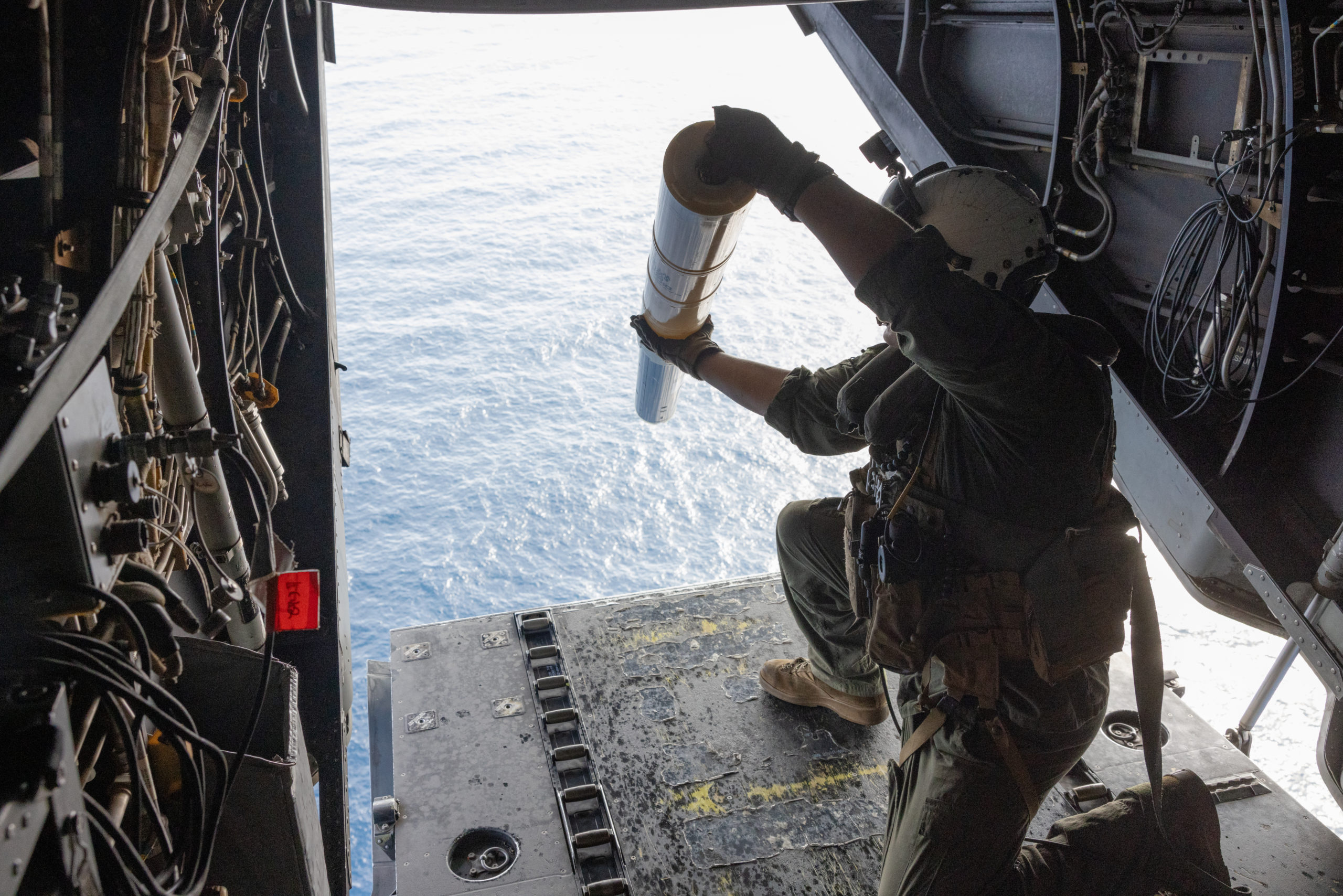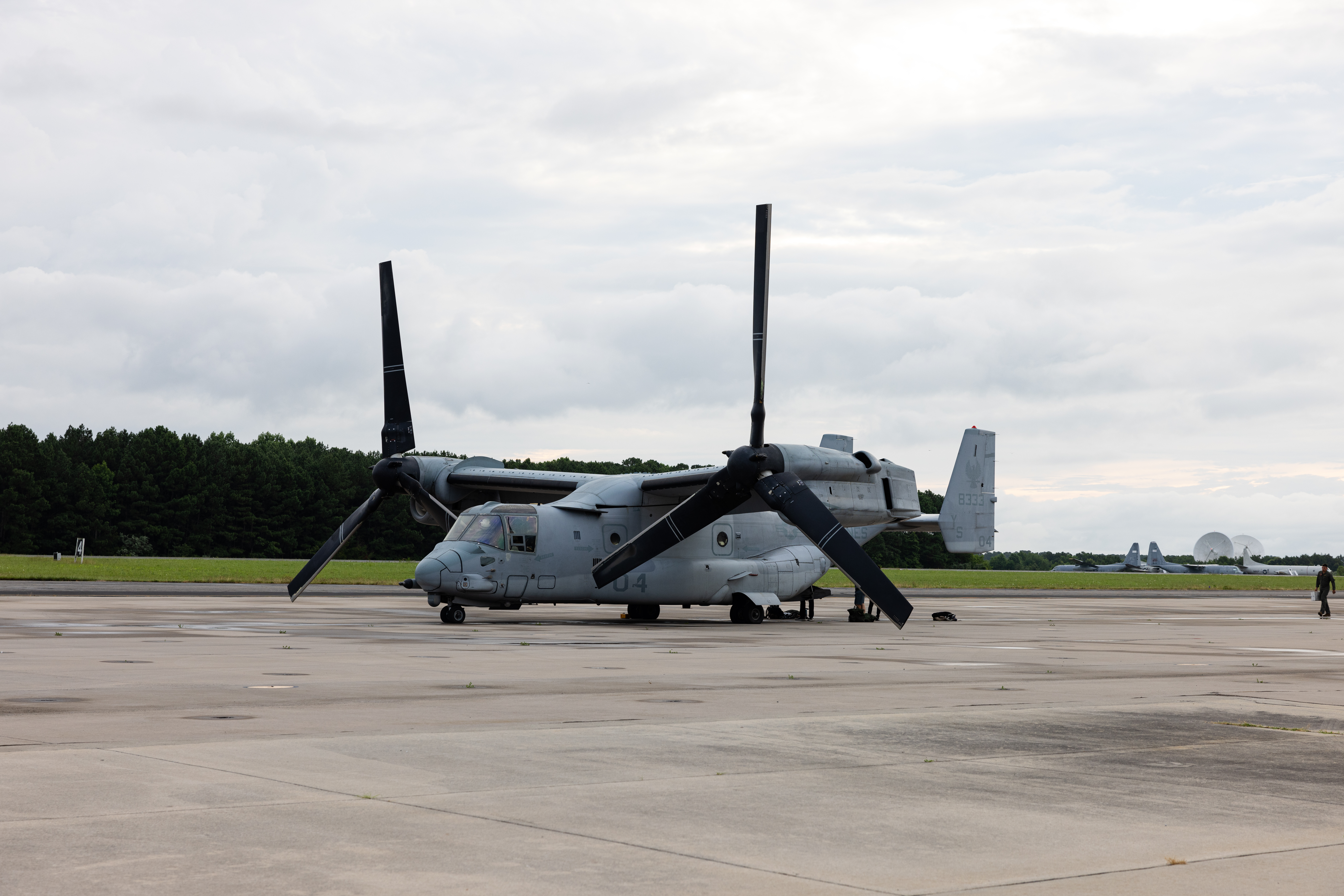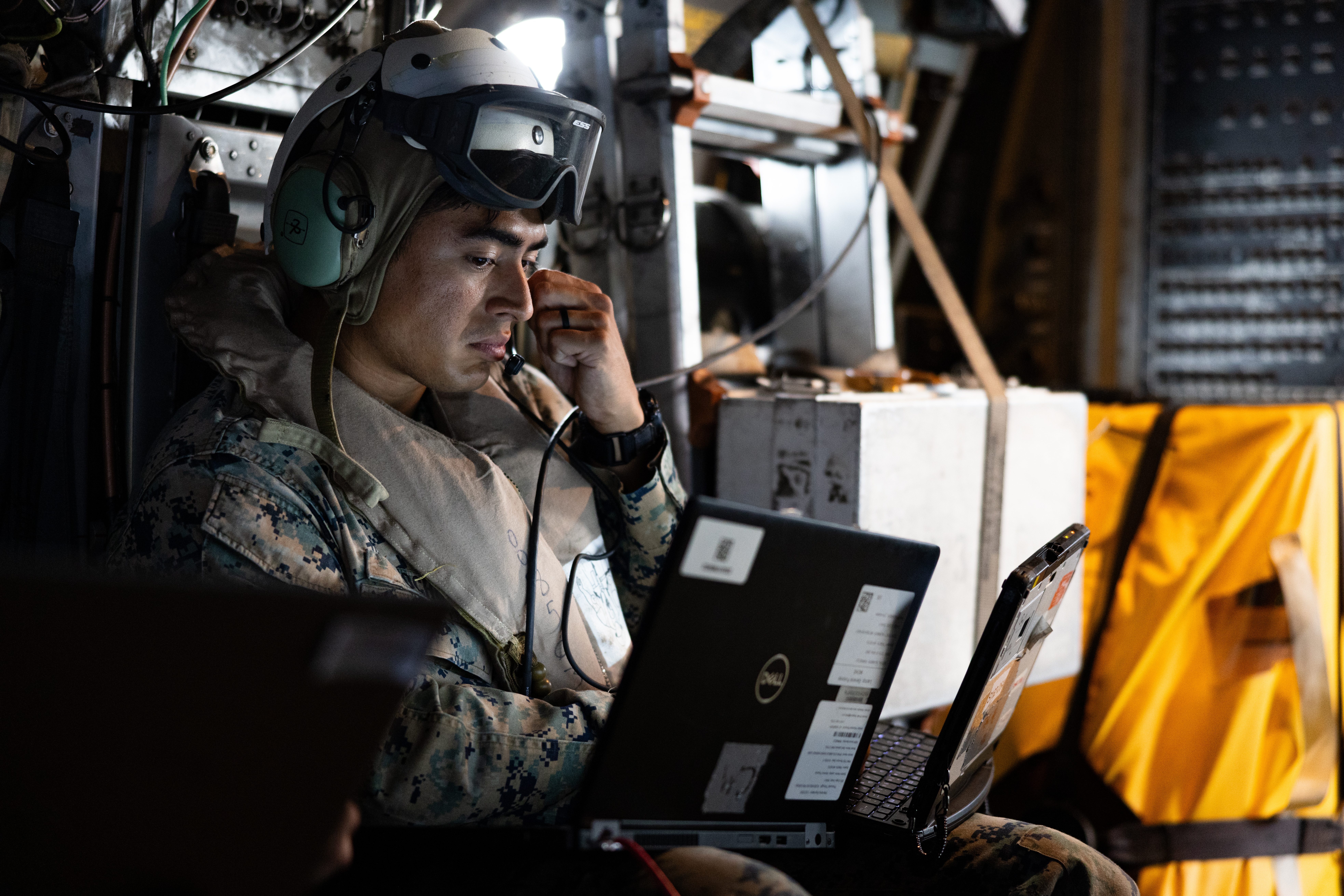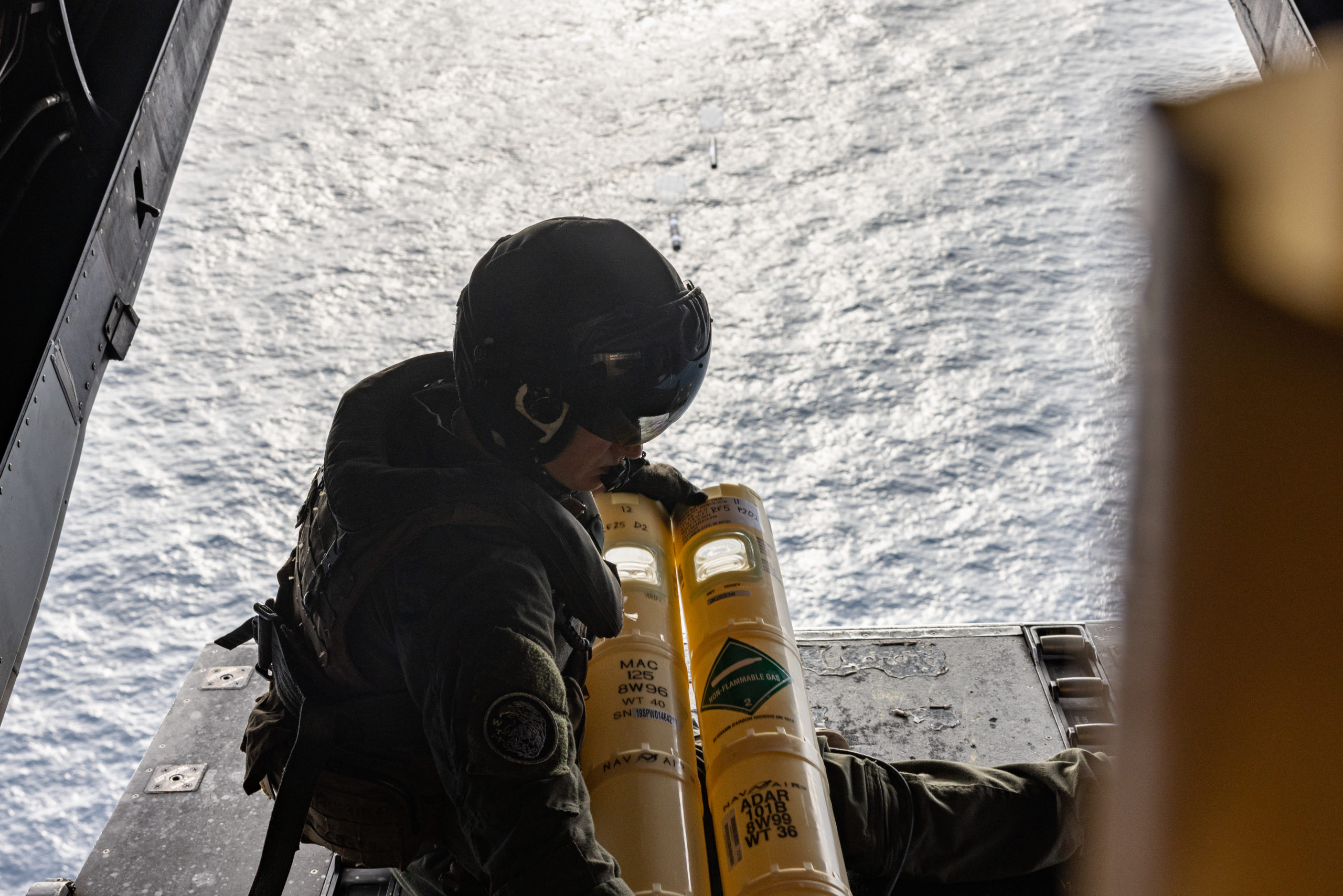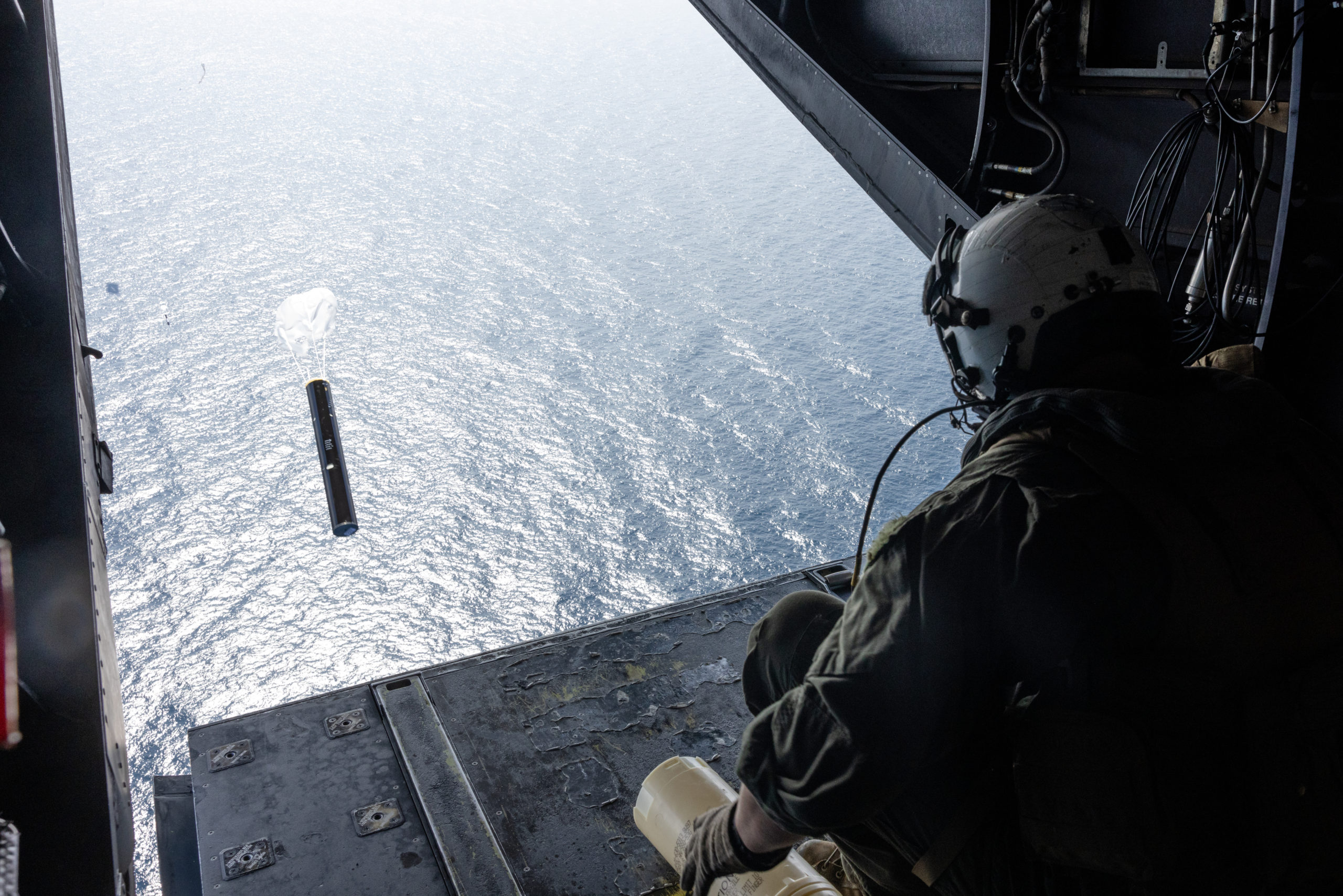In a significant demonstration of evolving naval warfare doctrine, U.S. Marines with Marine Medium Tiltrotor Squadron (VMM) 162 successfully integrated into anti-submarine warfare operations during Atlantic Alliance 2025, marking a significant evolution in how the Navy-Marine Corps team approaches undersea threats.
The exercise, conducted at the Surface Combat Systems Center on Wallops Island, Virginia, represents the culmination of experimental efforts that began during Fleet Battle Problem 2024, where Marine Corps units first stepped into the anti-submarine warfare (ASW) fight as part of operational fleet exercises.
Atlantic Alliance 2025 is the premier naval integration exercise on the East Coast, bringing together 8,500 sailors, Marines, and allied personnel in what officials describe as the largest amphibious exercise in the Western Atlantic in over a decade. The exercise, spanning from North Carolina to Maine and running from June 27 to July 15, 2025, featured over 25 U.S. Navy and Marine Corps units operating alongside Dutch naval forces and British Royal Commandos.
The multinational effort included forces from the United Kingdom, the Netherlands, and Canada, with participation from major naval vessels including USS George H.W. Bush (CVN 77), USS New York (LPD 21), USS Normandy (CG 60), HNLMS Johan de Witt (L801), HMCS Montreal (FFH 336), and Arleigh Burke-class destroyers USS Mason (DDG 87), USS Ross (DDG 71), and USS Gonzalez (DDG 66).
The most significant development emerging from Atlantic Alliance 2025 was the integration of Marine Corps capabilities into the Theater Undersea Warfare Commander (TUSWC) architecture, supporting Commander, Submarine Group TWO (COMSUBGRU2) in anti-submarine operations.
At the tactical level, Marine Corps MV-22B Ospreys from VMM-162 delivered A-size sonobuoys to support undersea capabilities, leveraging the aircraft’s unique speed, range, and lift capacity to complement traditional ASW platforms including the P-8A Poseidon and MH-60R Seahawk.
“The Osprey’s unique capabilities as a tiltrotor aircraft allow it to excel within the framework of distributed aviation operations and expeditionary advanced base operations,” explained Major Sean T. Penczak, executive officer of VMM-162. “Its ability to cover long ranges with a payload comparable to the P-8, while maximizing time on station for time-critical tasking, has made it highly effective in the anti-submarine warfare arena — demonstrating its versatility and value as emerging threats continue to evolve.”
The successful integration represents a fundamental shift in naval thinking about undersea warfare capabilities. Navy Captain Bill Howey, director of maritime operations for COMSUBGRU2, emphasized the significance of this evolution: “We’re past the question of whether the Marine Corps can contribute to ASW. Now we’re refining how they contribute and then integrating that into the fleet playbook.”
Colonel James C. Derrick, commanding officer of Marine Aircraft Group (MAG) 26, reflected on the rapid doctrinal change: “A few years ago, the idea of Marines flying ASW missions might have raised eyebrows. Now we’re doing it as part of the plan, using the Osprey’s unique capabilities to help enable naval maneuver.”
Marine forces are developing expanded roles in the ASW fight through capabilities in expeditionary command and control, distributed sensing, and sensor employment. This emerging role enhances the reach and resiliency of the TUSWC architecture, which traditionally centered around destroyers, fast-attack submarines, maritime patrol aircraft, and rotary-wing platforms, supported by allied contributions.
The Office of Naval Research (ONR) contributed to the exercise by supporting automated sonar processing and sensor command and control tools, enabling Marine Corps systems to contribute to real-time undersea warfare.
The exercise leveraged the sophisticated capabilities of the Surface Combat Systems Center at Wallops Island, a facility uniquely positioned on Virginia’s Eastern Shore. The center, with its mission to provide live integrated warfare systems in a maritime environment for fleet operations, testing, evaluation, training, research and development, provided an ideal testing ground for these innovative concepts.
First opened in 1985 as a U.S. Navy AEGIS Land-Based Test Site, the facility has grown to include Ship Self Defense and advanced combat system capabilities, making it perfectly suited for complex multi-domain exercises like Atlantic Alliance 2025.
The exercise strengthened interoperability across the Navy-Marine Corps team and allied forces while improving readiness in amphibious operations, expeditionary advanced base operations, and littoral operations in contested environments. Rear Admiral George Pastoor, Commander of the Netherlands Maritime Forces, highlighted the international significance: “AA25 has prepared us for future NATO exercises. Our integration with U.S., U.K. and Canadian forces ensures a stronger maritime response and directly impacts the stability of the entire Atlantic.”
Vice Admiral Doug Perry, Commander of U.S. 2nd Fleet, emphasized the comprehensive nature of the training: “From small tactical unit movements that employed our sailors and marines swimming offshore with UUVs, to composite Naval Maneuver in Anti-Submarine, amphibious and strike warfare, we demonstrated the interoperable warfighting lethality essential to Euro-Atlantic security.”
The successful integration of Marine Corps capabilities into anti-submarine warfare operations during Atlantic Alliance 2025 represents more than tactical innovation. It signals a fundamental reimagining of naval warfare doctrine. As Captain Howey noted, “The Navy-Marine Corps team is no longer splitting the fight above and below the surface. The undersea domain is a naval problem, and it’s being met with a naval solution.”
This exercise demonstrates how emerging threats and evolving operational concepts are driving innovation across the naval services, creating new capabilities that enhance the effectiveness and reach of undersea warfare operations in contested environments.
For an earlier discussion with George Pastoor, see the following:
The Way Ahead After Bold Alligator 2012: A Coalition Perspective
The following sources were used in generating the quotations in the article:
TUSWC Integrates Marine Corps into Undersea Operations During Atlantic Alliance 2025


